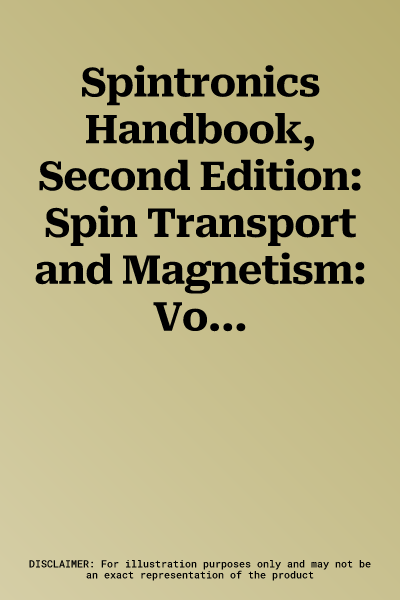Spintronics Handbook, Second Edition offers an update on the
single most comprehensive survey of the two intertwined fields of
spintronics and magnetism, covering the diverse array of materials and
structures, including silicon, organic semiconductors, carbon nanotubes,
graphene, and engineered nanostructures. It focuses on seminal
pioneering work, together with the latest in cutting-edge advances,
notably extended discussion of two-dimensional materials beyond
graphene, topological insulators, skyrmions, and molecular spintronics.
The main sections cover physical phenomena, spin-dependent tunneling,
control of spin and magnetism in semiconductors, and spin-based
applications.
Features:
- Presents the most comprehensive reference text for the overlapping
fields of spintronics (spin transport) and
magnetism. - Covers the full spectrum of materials and structures, from silicon and
organic semiconductors to carbon nanotubes, graphene, and engineered
nanostructures.
- Extends coverage of two-dimensional materials beyond graphene,
including molybdenum disulfide and study of their spin relaxation
mechanisms
- Includes new dedicated chapters on cutting-edge topics such as
spin-orbit torques, topological insulators, half metals, complex oxide
materials and skyrmions.
- Discusses important emerging areas of spintronics with
superconductors, spin-wave spintronics, benchmarking of spintronics
devices, and theory and experimental approaches to molecular
spintronics.
Evgeny Tsymbal's research is focused on computational materials
science aiming at the understanding of fundamental properties of
advanced ferromagnetic and ferroelectric nanostructures and materials
relevant to nanoelectronics and spintronics. He is a George Holmes
University Distinguished Professor at the Department of Physics and
Astronomy of the University of Nebraska-Lincoln (UNL), Director of the
UNL's Materials Research Science and Engineering Center (MRSEC), and
Director of the multi-institutional Center for NanoFerroic Devices
(CNFD).
Igor Zutic received his Ph.D. in theoretical physics at the
University of Minnesota. His work spans a range of topics from
high-temperature superconductors and ferromagnetism that can get
stronger as the temperature is increased, to prediction of various
spin-based devices. He is a recipient of 2006 National Science
Foundation CAREER Award, 2005 National Research Council/American Society
for Engineering Education Postdoctoral Research Award, and the National
Research Council Fellowship (2003-2005). His research is supported by
the National Science Foundation, the Office of Naval Research, the
Department of Energy, and the Airforce Office of Scientific Research.

